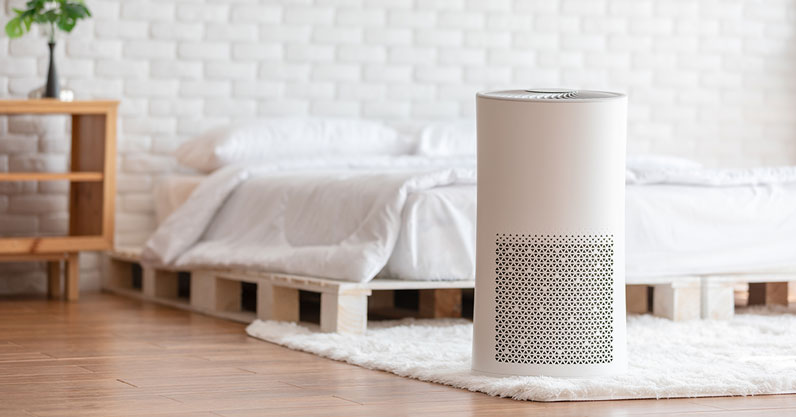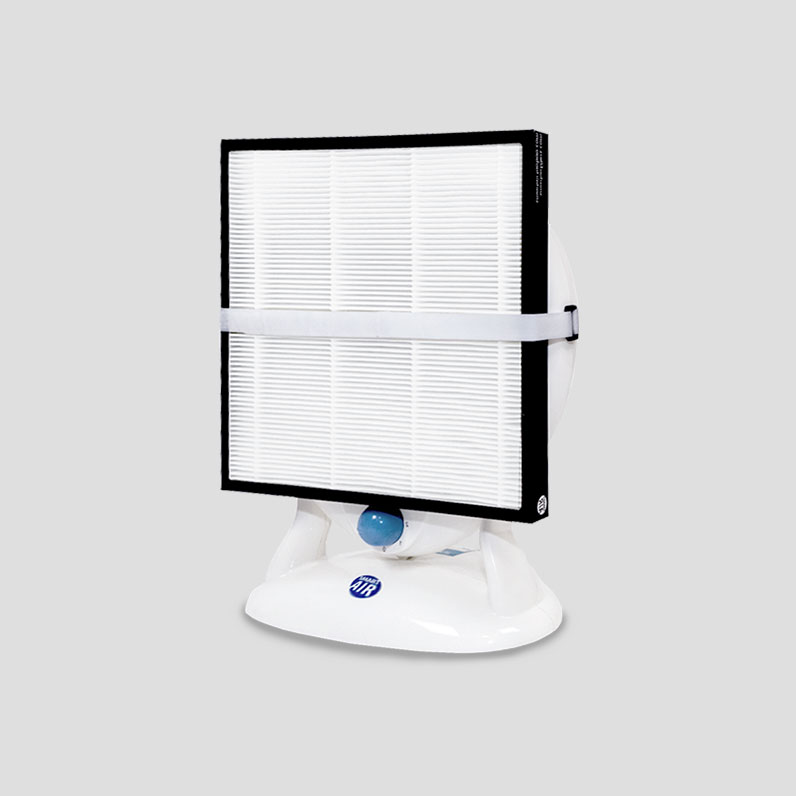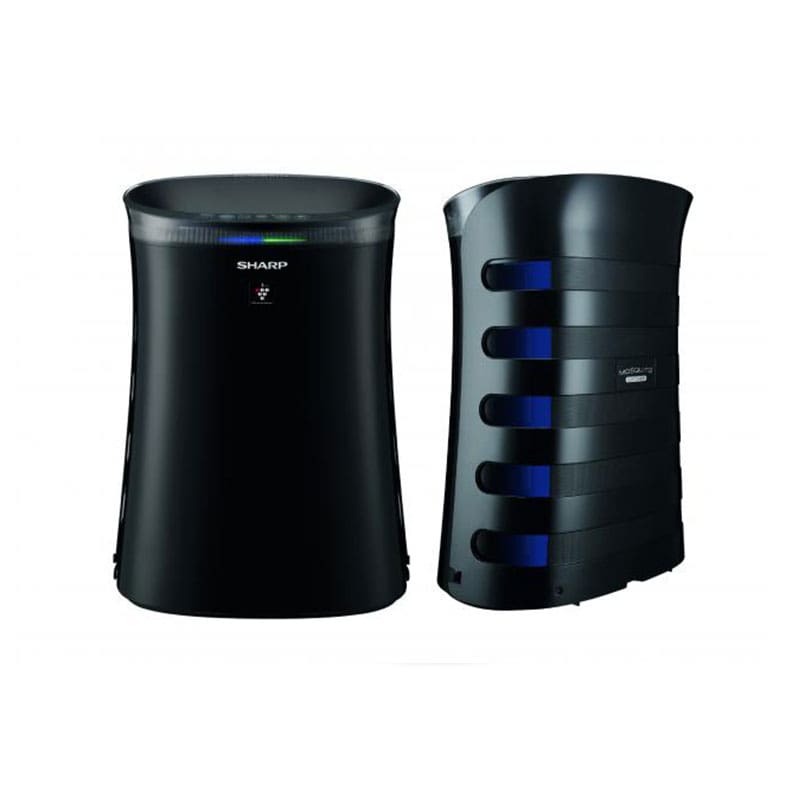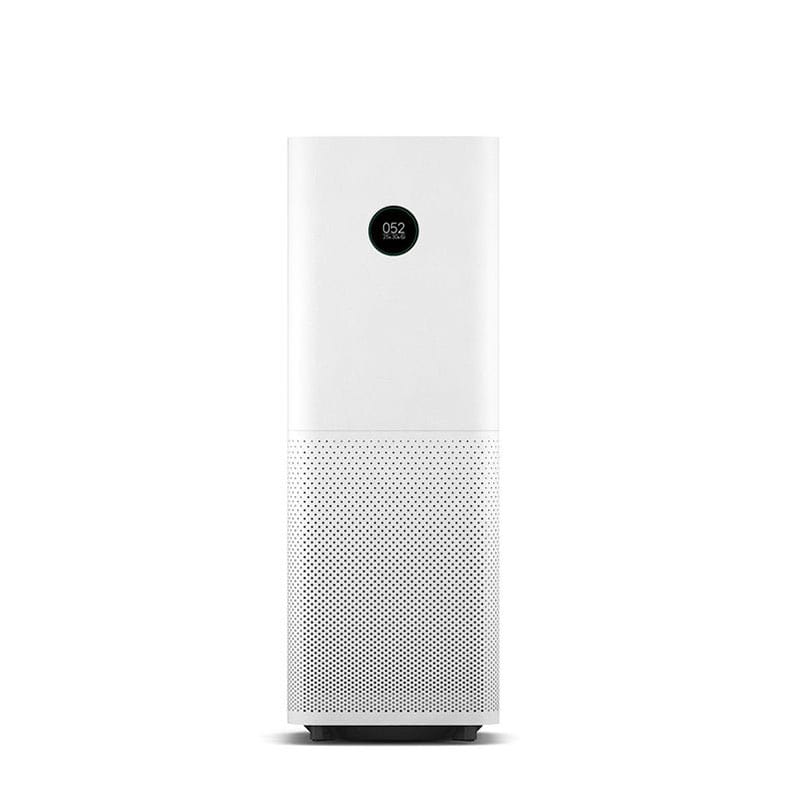What Is The Best Air Purifier For You? Let’s Compare Your Options
8 min readAmid the threat of COVID-19, people have been exploring every possible solution to seek protection against the virus.
Wearing a face mask is still one of the best counter-preventive measures against the virus as the Department of Health (DOH) reports that it can slow transmission of COVID-19 by 85 percent. But one appliance that was previously overlooked but is strongly considered as “essential†right now is the air purifier.

There have been claims made and promises said, but can air cleaners actually help protect you and your family against the coronavirus? Or is this just another fad that will wear itself out?
In this guide, we’ll explain how air purifiers clean the air, five types of filters, and how to use them. We’ve also listed five of the best air purifiers available in the Philippines and their prices.
How do air purifiers work?
Air purifiers are designed to clean the air within a specific confine. They get rid of impurities in the air including odors, smoke, dust, and dander.
Given the fact how Metro Manila’s air is polluted and how indoor air can be up to five times more polluted than outdoor air, the appeal of air purifiers is apparent.
COVID-19 Test Kit Procedures In The Philippines: Types, Cost, And Accuracy
So how do they work? Air purifiers have filters and a fan that sucks in air then circulates it back. As air moves through the machine, the filter catches pollutants and particles while letting the cleaned air flow back to the room.
In other words, the magic of purifying happens between the filters.
Now which kind of filter should you choose? Can air purifiers remove viruses and can it kill the novel coronavirus? It depends on what you need.
Five types of filters found in air purifiers
There are five different kinds of filters found in air purifiers. These are:
1. High Efficiency Particulate Air (HEPA) filters
HEPA filters are most effective at trapping airborne particles even as minuscule as 2.5 microns and smaller. In comparison, dust, mold, and pollen, particles that could trigger an allergic reaction, are 10 microns in diameter.
However, this filter does not remove odors, gases, or chemicals. These are filtered by another material that we will discuss later on.
But the golden question is: Can it filter coronaviruses? The practical answer is yes. That’s why HEPA filters are used in hospitals and airline cabins.
However, the virus has to be caught by the air purifier first before it gets filtered from the air, so don’t get cozy yet. Wearing a face mask and observing social distancing are still the best ways to avoid transmission.
2. Ionizers
Some air purifiers are marketed as air ionizers and it’s easy to mix them up. Air ionizers produce ions and release them into the air.
Some air conditioning units are also fitted with ionizers. These ions attach themselves to particles floating in the air and give them a negative charge. This causes them to stick to any surface in the room.
So can ionizers trap the coronavirus? Again, the practical answer is yes since the ions can attach themselves to the aerosols and droplets that the coronavirus clings to.
But it doesn’t exactly clean the air effectively—those particles can still re-circulate into the air if not removed.
Time to put that “Wipe Down challenge†to good use. Remember to use gloves.
3. Electrostatic filters
Similar to ionizers, electrostatic filters charge the particles in the air, which means it can also trap coronaviruses. But instead of just leaving them to stick anywhere, the machine collects them within.
Most models have a removable plate which you can wash and reuse. However, electrostatic filters produce ozone, so steer clear of this filter if you’re suffering from asthma, chronic bronchitis, emphysema, and other lung diseases.
4. Activated carbon filters
Activated carbon is a porous material that has a high absorbent ability and chemical bonding, which makes them effective at catching air pollutants and removing odors, gases, and chemicals.
If you have Multiple Chemical Sensitivity (MCS), this type of filter is recommended for you as it absorbs formaldehyde and fumes. It’s perfect for very young children, seniors, and asthmatic people.
While it has a lot of benefits, it’s not made for filtering against micro-particulates, so it’s not effective against coronavirus. However, it works best in tandem with other filters.
5. Ultraviolet filtration
Ultraviolet light can kill germs such as bacteria and viruses. This doesn’t clean the air from particles, so it’s typically used together with another filtration system.
Good UV air purifiers also minimize or eliminate their production of ozone so it’s a better choice for those with respiratory ailments.
Where should I place an air purifier for it to work effectively?
Before you decide where to put your air cleaner to achieve maximum purification, you have to be familiar with a few important things first.
Like we mentioned earlier, air purifiers are designed to clean the air in a specific location, so make sure you check the coverage area (usually indicated in square meters) of the item you’re looking to buy.
An air purifier with a larger coverage than the specific area is usually recommended to maximize effectiveness. If you want a machine to clean a room faster, then choose an air purifier with a powerful flow rate.
An air purifier’s flow rate is measured in cubic feet per minute (CFM). This is determined by its filter efficiency and fan power. The higher its air flow rate, the more air it can circulate and the faster the air is cleaned.
Now that you know this, we can move on to the important question: What is the best spot to place an air purifier?
Single-room air cleaners should be placed in the room you spend the most time, like your bedroom or your living room, for maximum filtration.
Make sure your purifier is also practicing social distancing: at least three feet or one meter away from any walls or furniture to allow unimpeded air to properly circulate around the room.
Air purifiers also become more efficient whenever they’re working in an enclosed space. This means doors and windows have to be shut whenever they’re turned on.
If you leave any openings for air outside to flow in, your air cleaner will work harder and might become less efficient.
Best Time To Buy Clothes, Gadgets, Appliances To Save Money
When is the best time to use an air purifier?
If you spend all day at home or in your room, the optimal time to use your air purifier is to run it the whole day to keep the air fresh. Air purifiers are meant to be used for extended periods of time. The longer you run it, the better air quality becomes.
But it’s okay to turn it off if you’re only at home for a few hours a day. Just remember that it takes about two hours for an air purifier rated to clean a 46 sqm. (500 sq. ft.) room.
If you’re worried about the electricity bill, you can save a few bucks by switching the fan speed to medium or low after two hours just to maintain the cleanliness of the air.
To help your air purifier run better for longer, consider dusting and vacuuming the room before you turn it on. That way the filter’s lifespan can be extended. You’ll also be doing yourself a favor by taking out potentially harmful particles from the source.
Keep in mind that these filters have different replacement periods. Always consult the manual or the manufacturer for the recommended filter replacement interval.
What is the best air purifier available in the Philippines?
Now that you virtually understand everything there is to know about air purifiers, the next thing to consider which product you’re actually going to purchase.
Here are some of the the top air purifiers that you can buy in the country:
1. SmartAir DIY Air Purifier: Best for those on a tight budget
Price: ₱2,450

If you’re on a tight budget or if you’re not ready to splurge thousands of pesos on an air purifier then you can start with this.
The SmartAir DIY Air Purifier has an HEPA filter that can clean a 15 sqm. room. And the replacement filter only costs ₱750.
2. Imarflex IAP-300: All-around budget air filter on a budget
Price: ₱6,700
The Imarflex IAP-300 has a silent motor mated with a bunch of purifying systems such as an HEPA filter, air ionizer, and advanced carbon filter for less than ₱7,000. It also covers 40 sqm. of space, so that’s a real value.
3. Sharp Plasmacluster Air Purifier with Mosquito Catcher FP-JM30/40: Cleans the air of particulates and pests
Price range: ₱10,998 to ₱15,638

This air purifier from Sharp uses the Plasmacluster ionizing technology to clean the air of harmful germs.
Not only that, it also has an HEPA filter and UV light that attract mosquitos and traps them with a glue sheet inside the device.
The coverage area for the FP-JM30 model is 23 sqm. while the bigger one, the FP-JM40 covers 30 sqm.
4. Xiaomi Mi Air Purifier Pro: The smart air purifier
Price: ₱11,590

Mi Air Purifier Pro is the best air purifier out of the Mi Air Purifier lineup. It features an HEPA filter and an activated carbon filter that will purify the air against contaminants, odors, and chemicals.
Not only that, its coverage area can go up to 60 sqm.
But perhaps its most amazing feature is its automatic filter detection that automatically adjusts to the quality of air around you. All these features can also be controlled and monitored via the Mi Home app.
5. UV Care Clean Air 6-in-1 Air Purifier: The complete package
Price: ₱15,000
The UV Care Clean air purifier offers six layers of filtration: washable pre-filter, HEPA filter, activated carbon, ionizer, ultraviolet filtration, and a photocatalyst filter that zaps air pollutants. This very capable purifier has a coverage area of 30 sqm.
6. Intellipure Compact: Commercial grade, award-winning filtration
Price: ₱47,500

The Intellipure Compact air purifier utilizes an award-winning patented DFS technology that’s 40 times more efficient than an HEPA filter. It also has a heavy-duty commercial grade gas and odor filtration system that eliminates most gases and fumes.
That’s why it’s used by the hospitals in Wuhan; and for what it’s worth, Dr. Hayden Kho and Dr. Vicki Belo swear by this product to help their daughter Scarlet Snow’s allergic rhinitis and asthma. It can also cover a huge area—up to 35 sqm.
Have an air purifier to recommend? Share them in the comments.